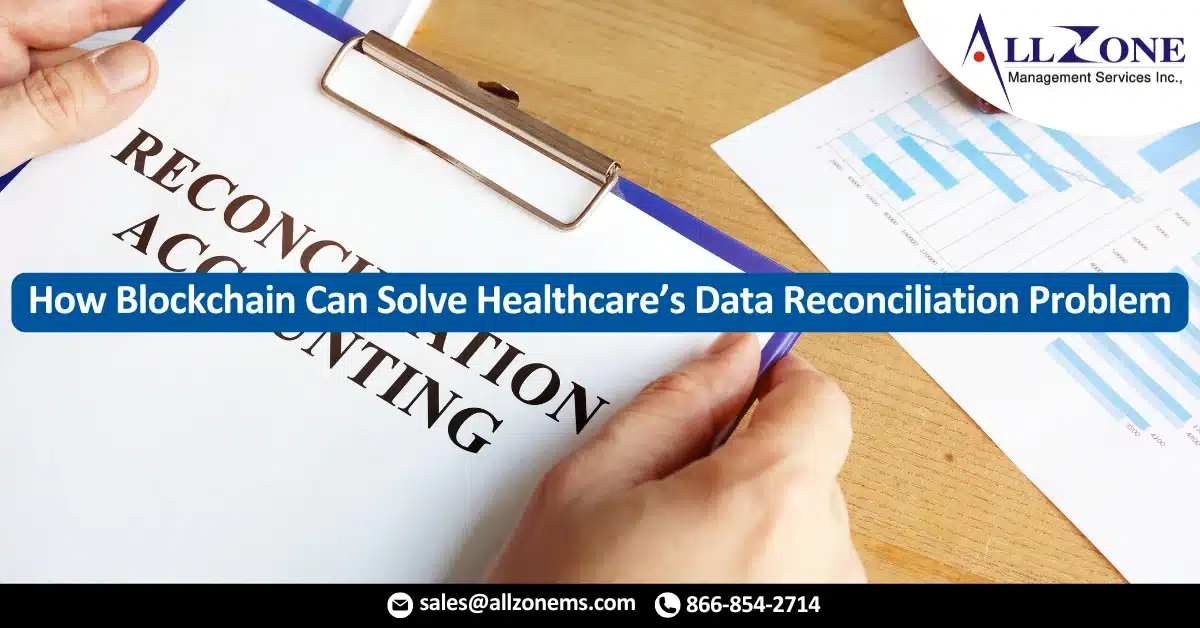The U.S. healthcare industry has a $1 trillion opportunity to cut costs and reduce waste, according to a 2015 Harvard Business Review analysis.
While there are various areas waste accumulates, costly data reconciliation is a prominent problem for hospitals and health systems. Change Healthcare defines data reconciliation as “the process of compiling information across companies in order to complete a set of records and
inform business decisions.” This process can be redundant, error-prone and costly.
The Solution? Blockchain
In a March 14 webinar sponsored by Change Healthcare and presented by Becker’s Hospital Review, Emily Bailey, blockchain product development director at Change Healthcare, detailed blockchain’s potential in healthcare.
By using blockchain, healthcare providers can change the way they share data. Blockchain brings identification, chronology and integrity to transactions. The distributed and decentralized network is transparent to all users and uses a mathematic set of rules, creating a permanent record of events and replicating the network history in-full.
Hospitals can experience improved security, transparency and efficiency through blockchain networks.
How Does Blockchain Work?
“Blockchain technology is designed to be a transactional log or event log of transactions that have occurred,” Mrs. Bailey said. “A lot of times you hear use cases of putting medical records on the blockchain or processing claims on the blockchain. These are all viable use cases worth exploring, but it’s important to view blockchain as a catalog or index of available information.”
A big misconception about blockchain is users put information into the ledger itself. However, by doing this, users jeopardize privacy and security. If a blockchain ledger is designed to contain all the data, it limits what information you can put into it, as everyone has an equal and transparent view of the blockchain.
Leaders of provider organizations may want to consider not putting patient medical records on a blockchain that’s available to the entire organization.
Consensus enables the successful application of blockchain technology. The majority of nodes on the blockchain must approve a transaction. And as the transaction moves between the provider, processor, payer and consumer, each party is notified when a step is completed. Blockchain maintains a real-time immutable record of the life of a transaction.
Blockchain In Revenue Cycle Management
Blockchain has great potential to improve revenue cycle management and claims management, according to Ms. Bailey. Through a blockchain underpinned network, providers can reduce fraud, waste and abuse through the technology’s added transparency. Additionally, blockchain is aimed at decreasing time and money spent reconciling information.
Payment reconciliation is significantly benefited through the use of blockchain. The distributed ledger speeds up payment settlement time, reduces waste by being automatic, increases transparency and predictability, boosts payment auditability and makes it easier to update and maintain claims.
Traditionally, payers and providers and outside vendors manually go through payment instructions. From there, banks, payment processors and the recipient organization need to be contacted. The process can get convoluted quickly with seven to eight organizations involved in a single claim.
Blockchain enables smart contracts, which allows for the storage of distributed logic prior to receiving payment information. This creates what is essentially an event notification that automatically triggers a domino of events, notifying the correct parties of specific tasks required.
“This is a very interesting way to create collaboration between companies,” Ms. Bailey said. “Not only because we are talking about using smart contracts to secure automation, but also because we are creating a peer-to-peer network where payers, providers, and financial institutions can communicate directly with one another.”
Payment delivery windows can be slashed from several days to 30 minutes or less through the use of blockchain and smart contracts, Change Healthcare estimates.
Conclusion
Healthcare executives are at different stages when it comes to blockchain adoption. Some are actively implementing it while others are still unsure how blockchain works. One thing is certain: it’s time to get educated on blockchain.
“Blockchain is inherently an infrastructure technology,” Ms. Bailey concluded. “It’s got a lot of hype. And it’s much like the early internet in that it’s a networking technology that enables other innovative applications. The internet gave us email. Blockchain continues to search for its killer applications, as email was to the internet. This makes it so in the future, we may be using blockchain without even realizing it.”
For More Information: https://www.beckershospitalreview.com/healthcare-information-technology/how-blockchain-can-solve-healthcare-s-data-reconciliation-problem.html

